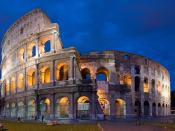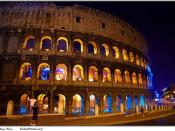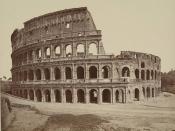Vitruvius considered that architecture needed to satisfy three requirements, 'commodity', 'firmness' and 'delight'. This level of thought is certainly evident in the form of the Colosseum.
The design of the Colosseum had to fulfil various aspects of function. The architect provided space through the use of the oval shape, which could fit more people around the edges of the arena. Visibility was enhanced through the use of the staged seating plan and the velarium, which provided shade from the sun. The differing levels of society were then segregated around this with slaves and women being banished to the top tier! The emperor, consul and vestal virgins had specific seating areas, which separated them from the crowd, yet remaining within the framework of unity. The access routes were meticulously planned through a honeycomb of stairwells reaching to different levels of the arena, this controlled the crowds but also retained ease of access through numbered entrances.
Beneath the Colosseum were also cells for storage of props and animals, which were led into the arena through the network of trapdoors.
The use of Greek orders of architecture was used in the façade of the Colosseum. It is a huge height of four layers using Tuscan, Ionic and Corinthian columns - strengthened by use of stone and concrete, however the vaults supplied most of the strength through the arches, which create the arcades - this evokes the imperial power and might of the Roman era. The very presence of the Colosseum in Rome suggests the splendour and grandeur of the society. The articulation suggests it is a public building; something for everyone to take pleasure in. The central locality is like a reminder of the emperors 'patronage and power'.
From this it is comprehensible why the design of the Colosseum has been reproduced through...


